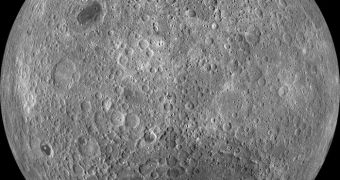For the first time in decades, astronomers and researchers now have access to a new set of images showing the far side of the Moon. This area has never been studied in depth before, experts say.
The reason for that is that the lunar half is always obscured from view, as seen from the surface of out planet. This is why the American space agency used a spacecraft in orbit around Earth's natural satellite to collect the views.
Over the years, space agencies have attempted to send space probes to image the far side of the Moon, with various degrees of success. The first mission to succeed was the Luna 3 probe, built and operated by the Soviet Union.
It managed to loop around the Moon, and collect 29 grainy images of the other side, which it then relayed back to Mission Control. Since then, only a handful of other spacecraft have ever been able to image that elusive territory.
The latest in the row is the NASA Lunar Reconnaissance Orbiter (LRO), a probe that was launched to investigate the Moon's surface on June 18, 2009. It took off aboard an Atlas 5 delivery system, from Space Launch Complex 41 (SLC-41) at the Cape Canaveral Air Force Station, in Florida.
Speaking about the 29 images sent back by Luna 3, the principal investigator for the camera onboard the LRO said: “What a surprise – the farside was a different world, geologically.”
“Unlike the widespread maria on the nearside, basaltic volcanism was restricted to a relatively few, smaller regions on the far side, and the battered highlands crust dominated,” Mark Robinson explained.
He added that the new views the LRO produced are composite images of datasets collected between November 2009 and February 2011, by the Wide Angle Camera (WAC) instrument on the orbiter.
The mosaic attached to this article contains (at full resolution) no less than 15,000 WAC images. “It provides the most complete look at the morphology of the farside to date, and will provide a valuable resource for the scientific community,” Robinson wrote in a past.
“And it’s simply a spectacular sight!” he added, quoted by Universe Today.
“As the mission progresses, and our knowledge of the lunar photometric function increases, improved and new mosaics will be released!. Work your way around the Moon with these six orthographic projections constructed from WAC mosaics,” Robinson concluded.

 14 DAY TRIAL //
14 DAY TRIAL //